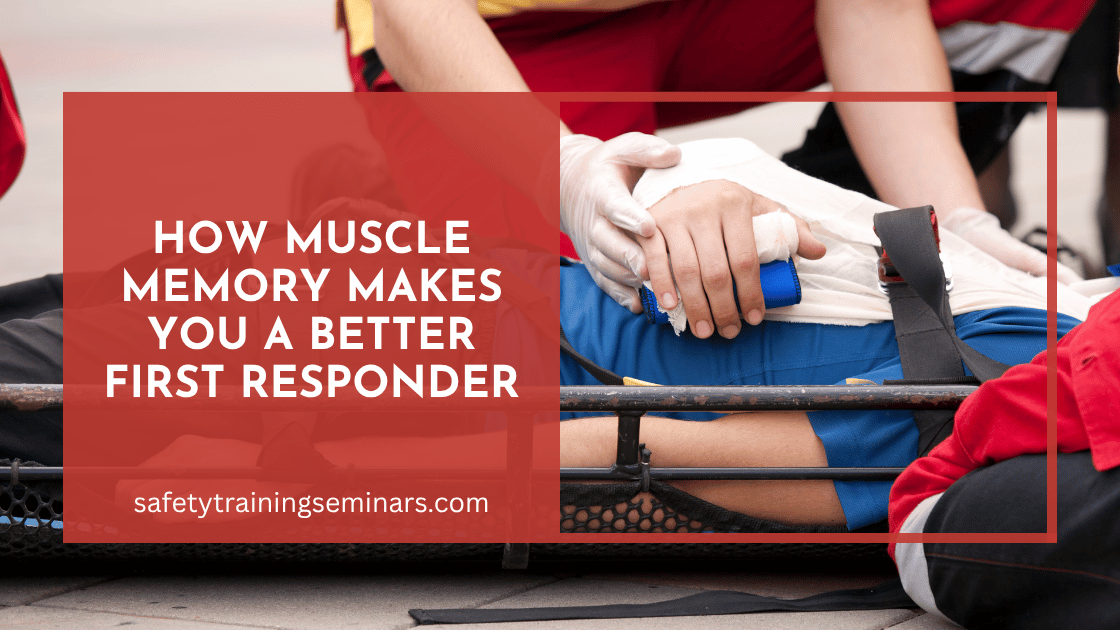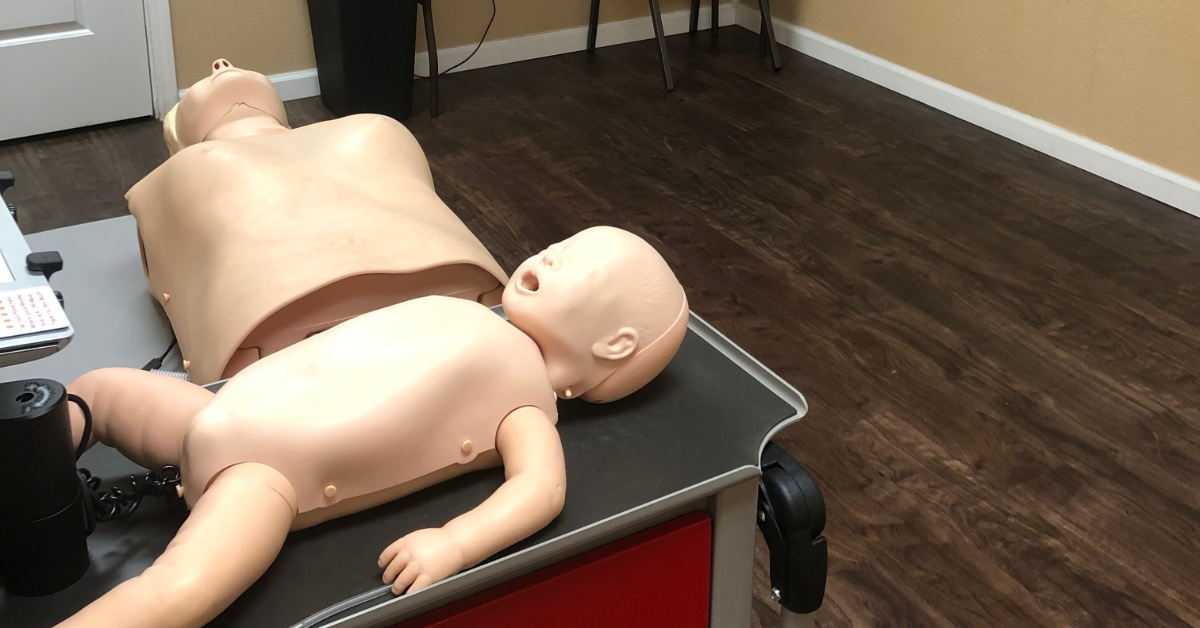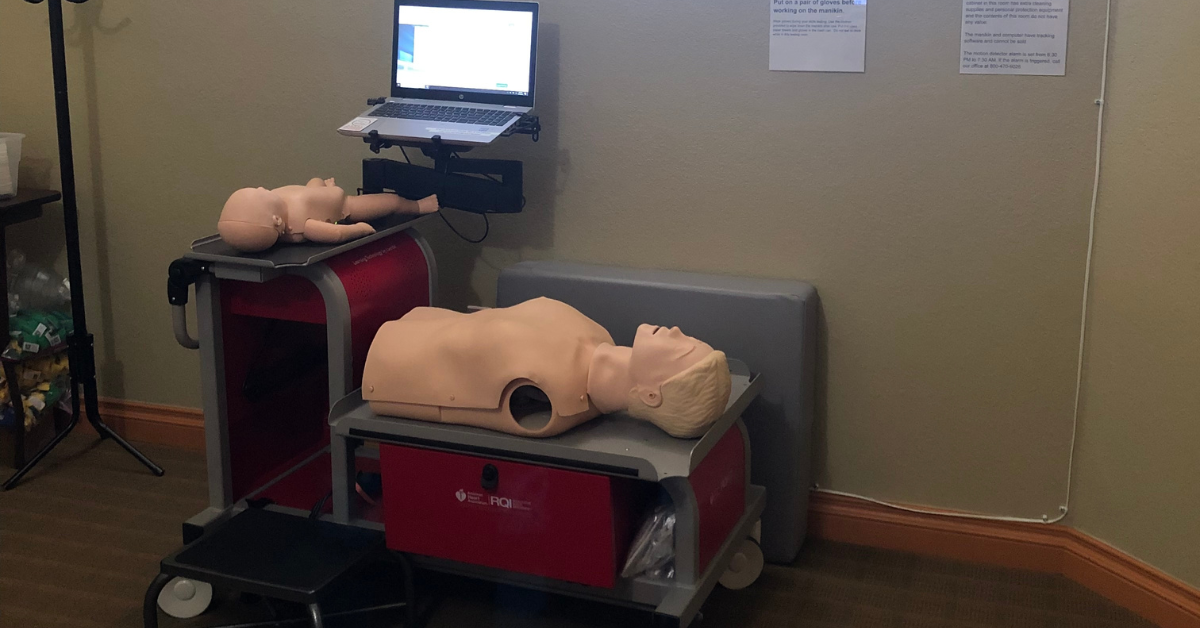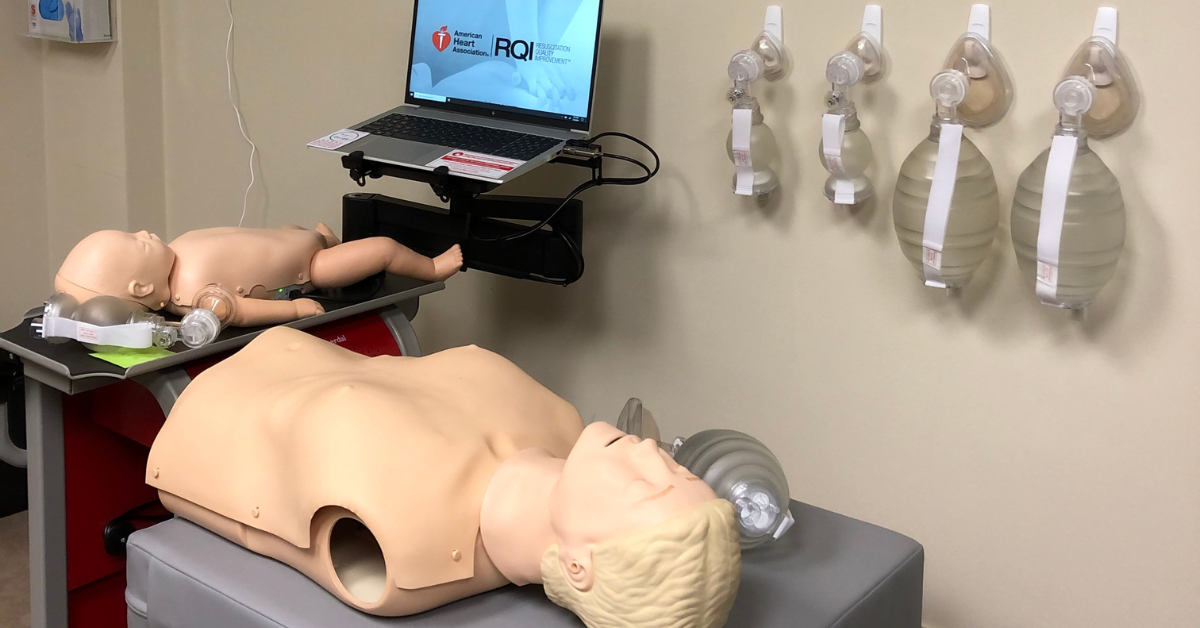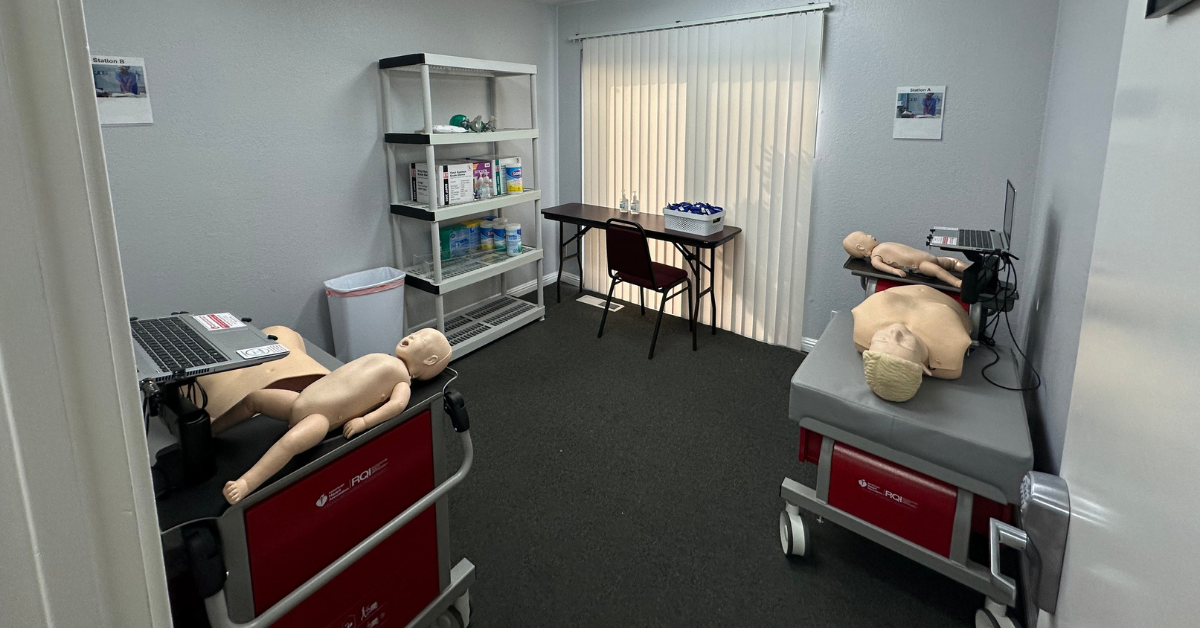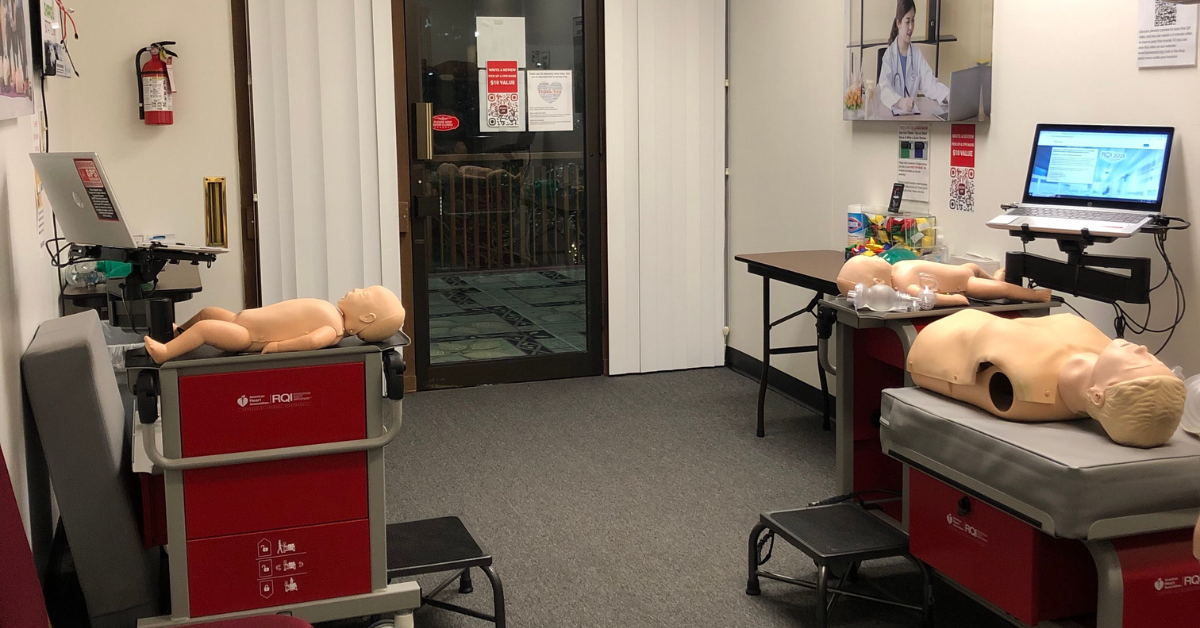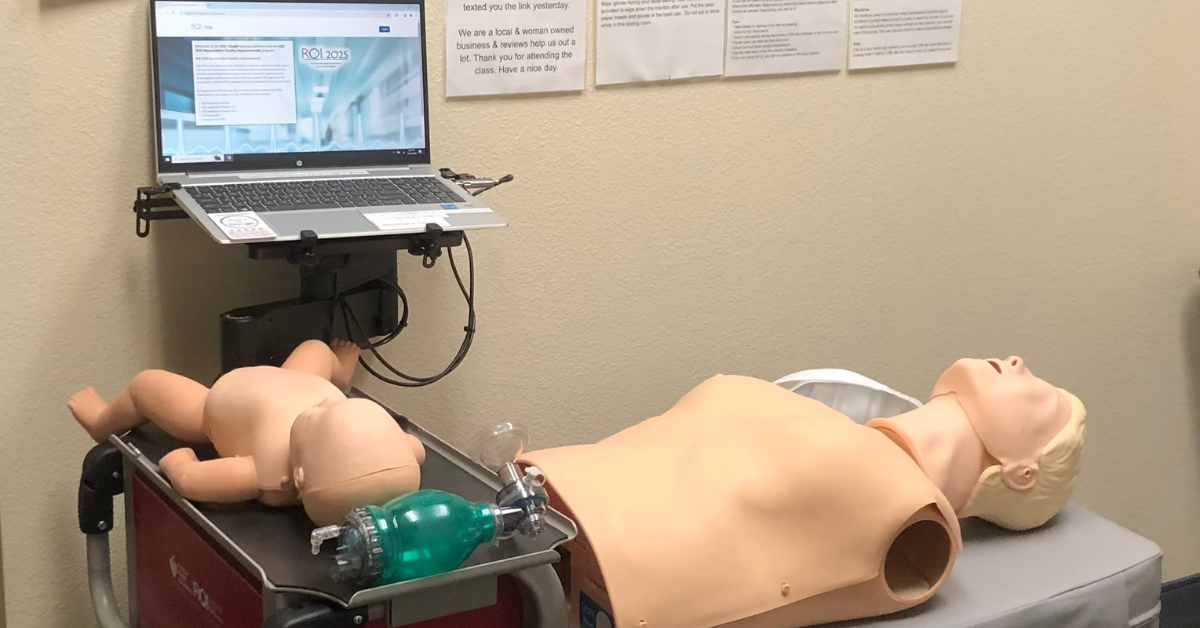Muscle memory transforms ordinary people into life-saving heroes. When cardiac arrest strikes, you have just 3-5 minutes to act before brain damage occurs. The difference between panic and precision? Your hands already know what to do.
First responders, healthcare workers, and everyday heroes rely on muscle memory to perform CPR, use AEDs, and manage emergencies. This automatic response system turns complex medical procedures into instinctive actions that can save lives when every second counts.
What Is Muscle Memory in Emergency Response?
Muscle memory is your brain’s ability to store and recall motor skills without conscious thought. Scientists call this “procedural memory” – a type of long-term memory that controls skilled movements.
When you practice CPR chest compressions 100 times, your brain creates neural pathways. These pathways become highways for instant action. Your hands remember the correct hand placement, compression depth, and rhythm without you thinking about it.
Emergency responders depend on this system. A paramedic doesn’t consciously think “place heel of hand on lower half of breastbone” during cardiac arrest. Their muscle memory takes over while their conscious mind focuses on patient assessment and treatment decisions.
The Science Behind Muscle Memory Formation
Your brain builds muscle memory through repetition and practice. Here’s how it works:
Neural Pathway Development
Each time you practice a skill, your brain strengthens specific neural connections. The myelin sheath around these neurons thickens, making signals travel faster. This is why experienced EMTs can start an IV in a moving ambulance while rookies struggle in perfect conditions.
Motor Unit Recruitment
Repeated practice teaches your muscles which fibers to activate and when. During CPR training, your brain learns to recruit the right combination of arm, shoulder, and core muscles for effective compressions.
Cerebellum Storage
Your cerebellum acts like a hard drive for motor skills. It stores the timing, coordination, and sequence of movements. Once stored, these skills remain accessible for years, even with limited practice.
How Muscle Memory Improves Emergency Response
Faster Response Times
Trained responders begin CPR faster than untrained individuals. They can quickly access the necessary skills and perform them more efficiently due to muscle memory.
Reduced Stress Impact
High-stress situations impair cognitive function. Your heart rate spikes, tunnel vision sets in, and complex thinking becomes difficult. Muscle memory operates independently of these stress responses, allowing you to perform life-saving skills even under pressure.
Consistent Performance Quality
The American Heart Association found that responders with regular training maintain compression rates within the optimal 100-120 beats per minute range. Muscle memory ensures consistent technique regardless of external conditions.
Multi-tasking Ability
Experienced first responders can perform CPR while simultaneously giving instructions to bystanders, calling for backup, or preparing additional equipment. Muscle memory handles the physical skills while conscious thought manages the broader emergency response.
Building Muscle Memory for Emergency Skills
Repetition Is Key
The “10,000-hour rule” doesn’t apply to basic life support. Repetitions of a simple motor skill creates lasting muscle memory. For CPR, this means quality practice sessions matter more than quantity.
Perfect Practice Makes Perfect
Muscle memory stores whatever you practice – good or bad technique. Poor form becomes as automatic as proper form. This is why professional training matters. You want to build muscle memory around correct procedures.
Spaced Repetition Works Best
Your brain retains motor skills better with spaced practice sessions rather than marathon training. The American Heart Association recommends recertification every two years for this reason. Regular refresher training maintains and strengthens existing muscle memory.
Scenario-Based Training
Practice in realistic conditions. Your muscle memory adapts to the environment where you train. If you only practice CPR on the floor, you might struggle to adapt to a bed or car seat during a real emergency.
The Role of Stress in Muscle Memory
Fight-or-Flight Response
Emergency situations trigger your sympathetic nervous system. Your heart rate increases, breathing becomes shallow, and fine motor skills deteriorate. Gross motor skills – like CPR compressions – remain intact because they’re controlled by different brain regions.
Stress Inoculation Training
Military and emergency services use stress inoculation to prepare responders. They practice skills under simulated stress conditions. This builds muscle memory that remains accessible even when adrenaline floods your system.
Breathing and Focus Techniques
Controlled breathing activates your parasympathetic nervous system, reducing stress hormones. First responders learn to use breathing techniques to maintain access to their training and muscle memory during emergencies.
Building Your Emergency Response Muscle Memory
Start with Professional Training
Quality instruction builds proper muscle memory from day one. The American Heart Association (AHA) sets the gold standard for CPR and first aid training. Their courses teach correct technique and provide hands-on practice with immediate feedback.
Safety Training Seminars is an AHA-certified training center that offers top-notch CPR, first aid, and emergency response courses. With over 70 locations in California and daily classes, you can start building muscle memory right away.
Practice Regularly
Muscle memory requires maintenance. Schedule practice sessions between formal recertification. Use a practice mannequin or even a firm pillow to maintain compression muscle memory. The goal is keeping neural pathways active and accessible.
Visualize Scenarios
Mental practice strengthens muscle memory. Visualize yourself responding to different emergency scenarios. Walk through the steps mentally, imagining the physical sensations of performing CPR or using an AED.
Cross-Train Different Skills
Emergency response involves multiple skills. Practice switching between CPR, rescue breathing, and AED use. This builds muscle memory for skill transitions and helps you maintain composure during complex emergencies.
Common Muscle Memory Mistakes to Avoid
Rushing Through Training
Fast practice doesn’t build strong muscle memory. Focus on smooth, controlled movements. Speed comes naturally as your neural pathways strengthen.
Inconsistent Technique
Mixing different techniques confuses your muscle memory. Stick to AHA guidelines and practice the same method consistently. This builds reliable, automatic responses.
Neglecting Refresher Training
Muscle memory fades without use. Even experienced responders need regular practice to maintain peak performance. Don’t skip recertification or refresher courses.
Practicing Bad Habits
Incorrect compressions, poor hand placement, or improper AED pad positioning become automatic if practiced repeatedly. Always train with qualified instructors who can correct mistakes before they become muscle memory.
Real-World Impact of Muscle Memory Training
Increased Survival Rates
Communities with higher CPR training rates show improved cardiac arrest survival rates. In Seattle, where CPR training is widespread, survival rates reach 62% for witnessed cardiac arrests.
Bystander Intervention
Trained individuals are more likely to help during emergencies. Muscle memory gives people confidence to act rather than freeze or call for help without providing direct assistance.
Professional Competence
Healthcare workers with strong muscle memory perform procedures more efficiently and with fewer errors. This translates to better patient outcomes and reduced medical errors.
Personal Confidence
Knowing your hands can save a life builds confidence in emergency situations. This psychological benefit extends beyond technical skills, making you more likely to step up when others need help.
Advanced Muscle Memory Techniques
Skill Chaining
Link multiple emergency skills together. Practice moving from scene assessment to CPR to AED use as one continuous sequence. This builds muscle memory for complete emergency response, not just individual skills.
Environmental Adaptation
Practice in different locations and conditions. Your muscle memory adapts to the training environment. Practice CPR in tight spaces, on different surfaces, and with various mannequin types.
Team Integration
Emergency response is often a team effort. Practice with partners to build muscle memory for communication, role assignment, and coordinated care. This is especially important for healthcare professionals working in clinical settings.
Equipment Familiarity
Different AED models have varying button layouts and voice prompts. Practice with multiple devices to build flexible muscle memory that adapts to available equipment.
Your Path to Life-Saving Muscle Memory
Building muscle memory for emergency response starts with a single step: professional training. The American Heart Association’s evidence-based courses provide the foundation for life-saving skills that become second nature through practice.
At Safety Training Seminars, we make this training accessible with convenient locations throughout California, daily classes, and same-day certification cards. Our experienced instructors ensure you build correct muscle memory from the start, with hands-on practice that prepares you for real emergencies.
Whether you’re a healthcare professional maintaining certification or someone who wants to be prepared for emergencies, muscle memory training gives you the tools to save lives. Your hands will remember what to do when someone’s life depends on it.
Ready to build muscle memory that saves lives? Find AHA-certified CPR, BLS, ACLS, or PALS training near you at Safety Training Seminars. With our 100% pass rate guarantee and thousands of five-star reviews, you’ll gain the confidence and skills to make a difference when it matters most.
In addition to basic first aid, those looking to deepen their emergency response knowledge can enroll in BLS CPR Classes in Stockton for hands-on experience and certification. Similarly, BLS CPR Classes in San Pablo offer another great local option for those in the East Bay region.


